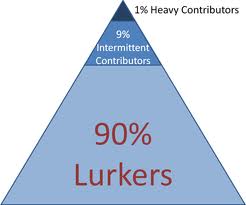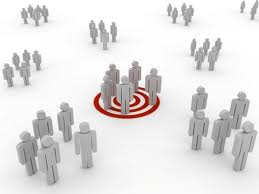 A few days ago, while vacationing in Michigan for the Labor Day weekend, I started reading “The Social Media Bible” by Lon Safko. As the pages turned and I read about marketing within a social media framework (including tactics, tools and strategies), I can’t tell you how many “ah-ha” and “hmmmm” fundraising moments that I experienced. Yesterday, the book inspired me to post about the costs associated with bad word of mouth and how this should evolve into a “generative question” around which to organize your board meetings. Today, the book has me looking at your donors very differently.
A few days ago, while vacationing in Michigan for the Labor Day weekend, I started reading “The Social Media Bible” by Lon Safko. As the pages turned and I read about marketing within a social media framework (including tactics, tools and strategies), I can’t tell you how many “ah-ha” and “hmmmm” fundraising moments that I experienced. Yesterday, the book inspired me to post about the costs associated with bad word of mouth and how this should evolve into a “generative question” around which to organize your board meetings. Today, the book has me looking at your donors very differently.
In the very early pages of this book (page 29), the author describes the various “phases in the membership life cycle” for social media users:
- Lurkers — These users view content, but don’t participate.
- Novices — These users view content, and periodically provide content.
- Insiders — These users are regularly providing content, commenting, etc.
- Leaders –These users are veterans and everyone watches what they do.
- Elders — These users have left the network for any number of reasons.
 After reading this page, I found myself thinking about donor database segmentation practices (because the social media content provider pyramid graphic reminded me so much of a tradition range of gifts chart donor pyramid).
After reading this page, I found myself thinking about donor database segmentation practices (because the social media content provider pyramid graphic reminded me so much of a tradition range of gifts chart donor pyramid).
In a white paper written by Roy Wollen and Bonnie Massa, they talk about five ways to segment a donor database (including why to do it). They describe various donor groups as follows:
- Low dollar donors, volunteers, constituents, past & present employees
- Buyers (e.g. those people who attended an event, bought something from you, subscribed to something, etc)
- Lapsed donors
- High dollar donors
- Members, benefactors, patrons
- Institutional givers
In the end, we segment people into groups because we understand that different groups have different dynamics and needs. Once this revelation hits us, we understand that “one-size-fits-all” fundraising solicitation strategies don’t work. Sending a letter to an institutional giver might get you a handful of dollars, but it will fall short of what they can and will donate to your cause. For this reason, a major gifts strategy is probably the right tool.
Conversely, employing a major gifts strategy is overkill and too expensive for the legion of low dollar donors that reside in your donor database.
 Once you realize how important segmentation is to the success of your resource development program, a flood of new questions come down the pike, such as:
Once you realize how important segmentation is to the success of your resource development program, a flood of new questions come down the pike, such as:
- How many database records exist in each segment?
- What characteristics and needs exist for each group? (e.g. what makes them tick)
- Which solicitation tools in my fundraising toolbox work best for each group?
- What stewardship activities do I need to employ with each group to maximize the odds of moving them from one group to the another?
- Are there things I can do to increase each groups “frequency” of donation and “size” of contribution?
- What is the ROI (e.g. the cost of raise one dollar) for each group? If I shift my attention ratio around, will I raise more money?
- What metrics should I be tracking?
Ahhhhh, yes. It suddenly becomes a brave new world and your fundraising perspective changes quite quickly. Perhaps, that resource development audit or donor database review takes a different shape or level of importance now? 😉
Does your non-profit organization segment its donors? How do you do it? Into what categories do you use? What metrics are you tracking and how? Has your approach changed as a result? How many social media “lurkers” exist on your agency’s various social media platforms, and how many “lurkers” exist in your donor database?
Please scroll down and share your answers and thoughts using the comment box below.
Here’s to your health!
Erik Anderson
Founder & President, The Healthy Non-Profit LLC
www.thehealthynonprofit.com
erik@thehealthynonprofit.com
http://twitter.com/#!/eanderson847
http://www.facebook.com/eanderson847
http://www.linkedin.com/in/erikanderson847

One comment